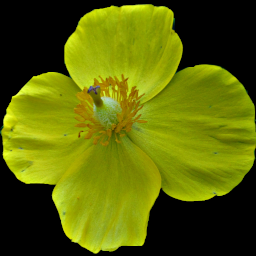 Coltsfoot is one of our earlier spring flowers; these were blooming on the grounds of the Pittsburgh Zoo, Highland Park, in early April. The cheery and shaggy yellow flower heads top a short stalk that pops straight out of the ground; there are no leaves until later on. The plant’s favorite habitat seems to be a damp hillside at the edge of the woods, often beside a street or highway. Coltsfoot was, as its generic name suggests, a popular cough remedy; but it has been known to cause serious liver damage, so it’s not as popular as it used to be.
Coltsfoot is one of our earlier spring flowers; these were blooming on the grounds of the Pittsburgh Zoo, Highland Park, in early April. The cheery and shaggy yellow flower heads top a short stalk that pops straight out of the ground; there are no leaves until later on. The plant’s favorite habitat seems to be a damp hillside at the edge of the woods, often beside a street or highway. Coltsfoot was, as its generic name suggests, a popular cough remedy; but it has been known to cause serious liver damage, so it’s not as popular as it used to be.
Gray describes the genus and the species:
TUSSILÀGO [Tourn.] L. COLTSFOOT. Head many-flowered; ray-flowers in several rows, narrowly ligulate, pistillate, fertile; disk-flowers with undivided style, sterile. Involucre nearly simple. Receptacle flat. Achenes slender-cylindric or prismatic; pappus copious, soft, and capillary. — Low perennial, with horizontal creeping rootstocks, sending up scaly scapes in early spring, bearing a single head, and producing rounded heart-shaped angled or toothed leaves later in the season, woolly when young. Flowers yellow. (Name from tussis, a cough, for which the plant is a reputed remedy.)
T. farfara L. — Wet places and along brooks, e. Que. to Pa., O.,and Minn. (Nat. from Eu.)
–
Frederic William Stack gives us this description in Wild Flowers Every Child Should Know:
COLTSFOOT. COUGHWORT.
Tussilago Farfara. Thistle Family.
This is the same Coltsfoot that our grandmothers used to gather and dry and hang in the garret along with their Boneset, Catnip, Goldthread, and a various assortment of garden herbs. Coltsfoot was considerably used at one time as a family remedy for coughs and colds, and many a steaming cupful has been sipped by country people for this purpose. Its Latin name, an old one used by Pliny, is derived from tussis, a cough, and ago, alluding to the medicinal use of the leaves. The ancients smoked the leaves of Coltsfoot for relief in cases of asthma. Its fresh juice has been used for affections of the skin, and in Germany the dried leaves are said to be used as a substitute for smoking tobacco. The flowers of the Coltsfoot look something like those of an imperfectly developed, or half-opened Dandelion, but where the flower heads of the Dandelion are slightly tufted or raised toward the centre, those of the Coltsfoot are cupped or hollowed, more like an Aster, with a finely fringed edge. The rather large, solitary flower is borne on a thick, hollow, light green stem, rising direct from the long, slender, creeping perennial root from four to eighteen inches in height. It is usually stained with red and is covered with numerous scalelike and alternating leaflets. The light yellow flower head is of a lighter shade than that of the Dandelion, and is set in a deep, leafy, thimble-shaped green cup. It is composed of many ray and disc florets — an arrangement fully explained in the description of the Asters. The ray florets are fringe-like, and the small disc florets are five-parted. They have an agreeable odour, and as they fade, they turn to red-brown.





